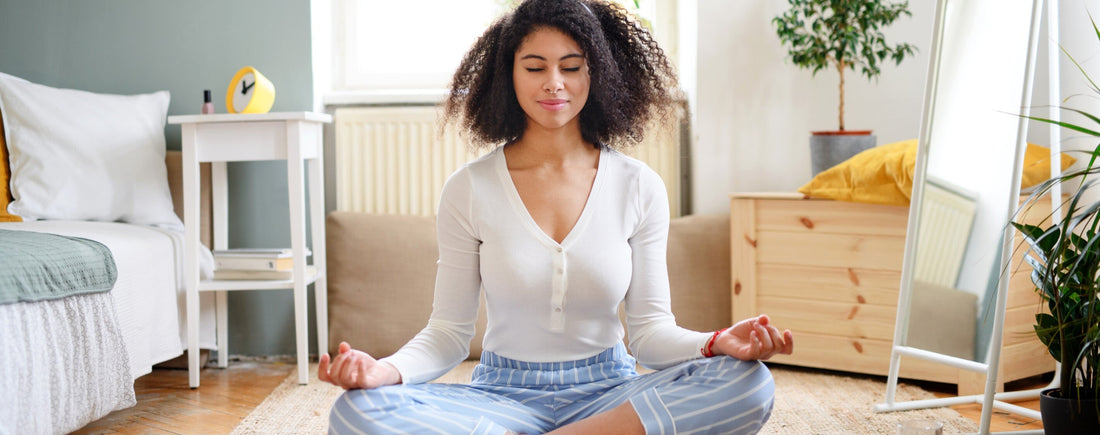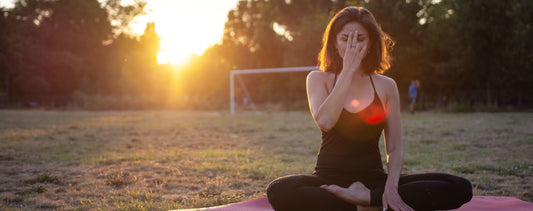The conversation around the vagus nerve and its importance has become increasingly popular in recent years. The vagus nerve is the largest nerve in the body and is a key part of your parasympathetic “rest and digest” nervous system. It influences your breathing, digestive function, and heart rate, all of which can significantly impact your mental health.
The “tone” of our vagus nerve is fundamental when it comes to our overall health and well-being. Vagal tone is an internal biological process that represents the vagus nerve activity. Increasing the vagus nerve activity or vagal tone helps activate the parasympathetic nervous system and allows us to return to a relaxed state after stressful experiences. The activity of our vagal tone is directly related to experiencing positive emotions, thus the higher our vagal tone, the healthier our mind and body can be. There are many practical things we can do to increase our vagal tone, such as cold exposure, meditation, deep belly breathing, exercise, and yoga. Follow along with this soothing and breath-focused yoga practice to increase vagal tone and activate the parasympathetic nervous system.
Begin in a comfortable seated position somewhere where you will not be disturbed. Relax your shoulders away from your ears and begin to settle into the body. Place one hand on your belly and relax the other hand in your lap. Begin to cultivate a deep diaphragmatic breath, feeling the belly press into your hand as you inhale. Continue to breathe from the belly as you fixate your awareness on the sensation of the breath. Stay here in meditation for five to ten minutes. Notice when your mind wanders and gently and non judgmentally return your awareness to the breath as many times as necessary. When you are finished, blink your eyes open and return your awareness to the space around you.
Spread your knees out wide and sit back onto your heels. Extend your arms out long in front of you and let your chest melt toward the mat. Take a few deep breaths to settle into the body, relaxing deeper with every exhale. Stay in child’s pose for ten counts, maintaining a deep diaphragmatic breath in this shape.
Come to stand at the top of your mat. Separate your feet hips-width distance and fold your upper body over your thighs. Let your arms hang heavy and invite a slight bend into the knees, resting your belly on your thighs as you relax into the posture. Allow your neck to release and the crown of the head to fall toward the mat. Hold here for ten breaths.
Grab a bolster or rolled blanket if you don’t have one, and place it vertically in the center of your mat. Place the short edge of the bolster at your tailbone, lying down on your back, allowing the support to open up your heart space. You may spread your legs out wide or bring the souls of the feet together for a reclined butterfly pose. Hold and breathe deeply here for ten counts.
Remove the bolster and lie down on your mat, placing a block beneath your tailbone. Extend your legs up toward the ceiling, keeping a slight bend in the knees and coming into waterfall pose. Let your legs be soft and relaxed as you allow the rest of your body to heavy into the earth. You may rotate your feet in circles in one direction and then the other for an added stretch in the ankles. Hold for ten breaths.
Remove the block and come to lie down on your mat. Extend your legs toward the ceiling and grab the outer edges of your feet, encouraging your knees in toward your armpits. Root down firmly through your spine and breathe into the inner hips. Stay here, or invite gentle movement into the posture, swaying back and forth on your spine or extending one leg and then the other to stretch the hamstrings. Hold for ten breaths.
Come to lie down on your back, extending your arms and legs out long and wide. Take a few deep breaths through the nose and out of the mouth. Let go of any breath control or attempts to control your mind and allow your body to release any tension it is holding. Stay here, absorbing the effects of your practice for up to ten minutes, gently coming out and returning to your day when you are finished.
Discover the hidden power of the vagus nerve and tune into your subtle body in How to Be Vibrantly Alive, a six-part series with Deepak Chopra, available now in the Chopra App.
The “tone” of our vagus nerve is fundamental when it comes to our overall health and well-being. Vagal tone is an internal biological process that represents the vagus nerve activity. Increasing the vagus nerve activity or vagal tone helps activate the parasympathetic nervous system and allows us to return to a relaxed state after stressful experiences. The activity of our vagal tone is directly related to experiencing positive emotions, thus the higher our vagal tone, the healthier our mind and body can be. There are many practical things we can do to increase our vagal tone, such as cold exposure, meditation, deep belly breathing, exercise, and yoga. Follow along with this soothing and breath-focused yoga practice to increase vagal tone and activate the parasympathetic nervous system.
Meditation with Deep Diaphragmatic Breath
Begin in a comfortable seated position somewhere where you will not be disturbed. Relax your shoulders away from your ears and begin to settle into the body. Place one hand on your belly and relax the other hand in your lap. Begin to cultivate a deep diaphragmatic breath, feeling the belly press into your hand as you inhale. Continue to breathe from the belly as you fixate your awareness on the sensation of the breath. Stay here in meditation for five to ten minutes. Notice when your mind wanders and gently and non judgmentally return your awareness to the breath as many times as necessary. When you are finished, blink your eyes open and return your awareness to the space around you.
Child’s Pose
Spread your knees out wide and sit back onto your heels. Extend your arms out long in front of you and let your chest melt toward the mat. Take a few deep breaths to settle into the body, relaxing deeper with every exhale. Stay in child’s pose for ten counts, maintaining a deep diaphragmatic breath in this shape.
Forward Fold
Come to stand at the top of your mat. Separate your feet hips-width distance and fold your upper body over your thighs. Let your arms hang heavy and invite a slight bend into the knees, resting your belly on your thighs as you relax into the posture. Allow your neck to release and the crown of the head to fall toward the mat. Hold here for ten breaths.
Supported Heart Opener
Grab a bolster or rolled blanket if you don’t have one, and place it vertically in the center of your mat. Place the short edge of the bolster at your tailbone, lying down on your back, allowing the support to open up your heart space. You may spread your legs out wide or bring the souls of the feet together for a reclined butterfly pose. Hold and breathe deeply here for ten counts.
Waterfall
Remove the bolster and lie down on your mat, placing a block beneath your tailbone. Extend your legs up toward the ceiling, keeping a slight bend in the knees and coming into waterfall pose. Let your legs be soft and relaxed as you allow the rest of your body to heavy into the earth. You may rotate your feet in circles in one direction and then the other for an added stretch in the ankles. Hold for ten breaths.
Happy Baby
Remove the block and come to lie down on your mat. Extend your legs toward the ceiling and grab the outer edges of your feet, encouraging your knees in toward your armpits. Root down firmly through your spine and breathe into the inner hips. Stay here, or invite gentle movement into the posture, swaying back and forth on your spine or extending one leg and then the other to stretch the hamstrings. Hold for ten breaths.
Savasana
Come to lie down on your back, extending your arms and legs out long and wide. Take a few deep breaths through the nose and out of the mouth. Let go of any breath control or attempts to control your mind and allow your body to release any tension it is holding. Stay here, absorbing the effects of your practice for up to ten minutes, gently coming out and returning to your day when you are finished.
Discover the hidden power of the vagus nerve and tune into your subtle body in How to Be Vibrantly Alive, a six-part series with Deepak Chopra, available now in the Chopra App.






















